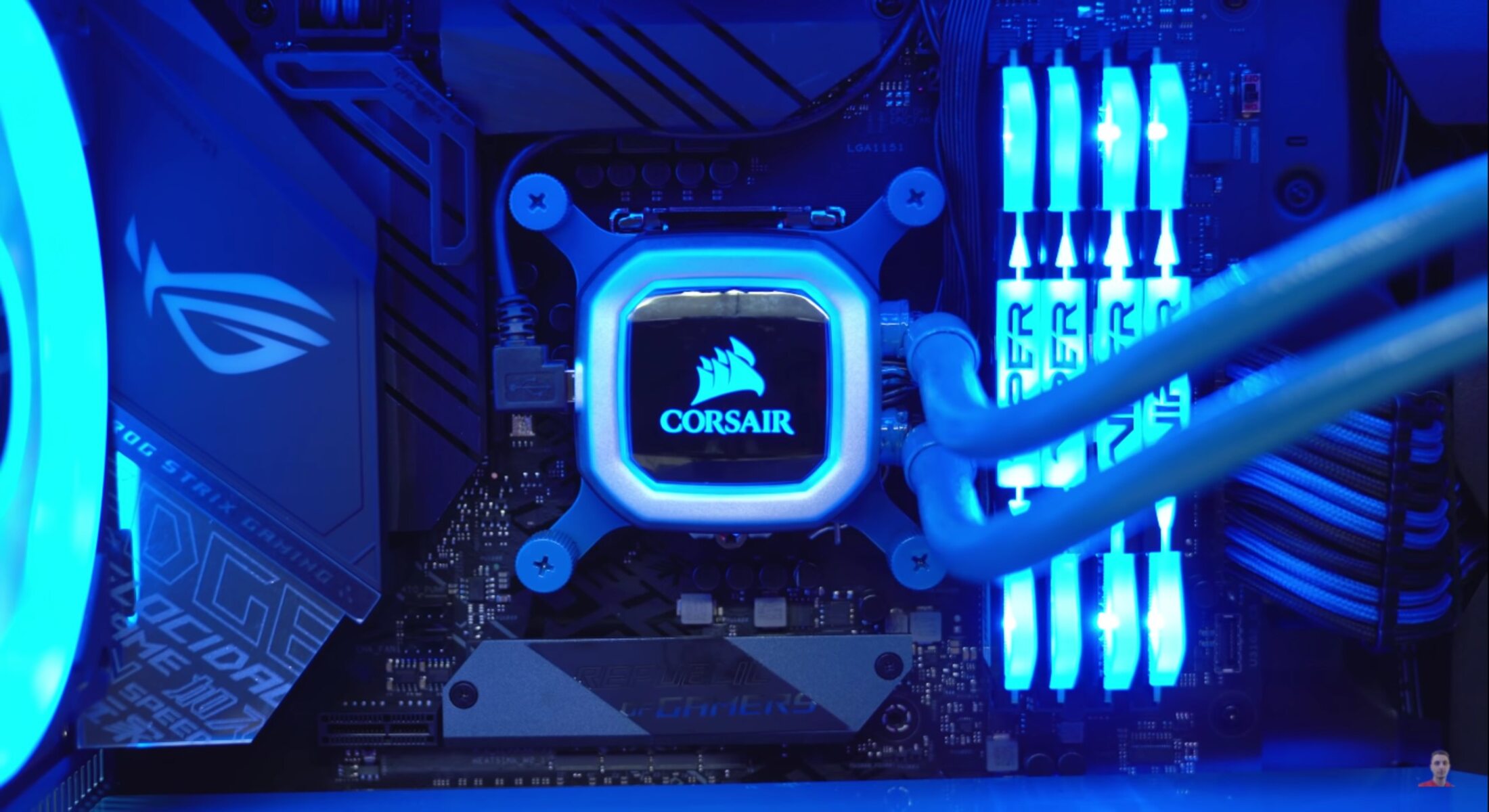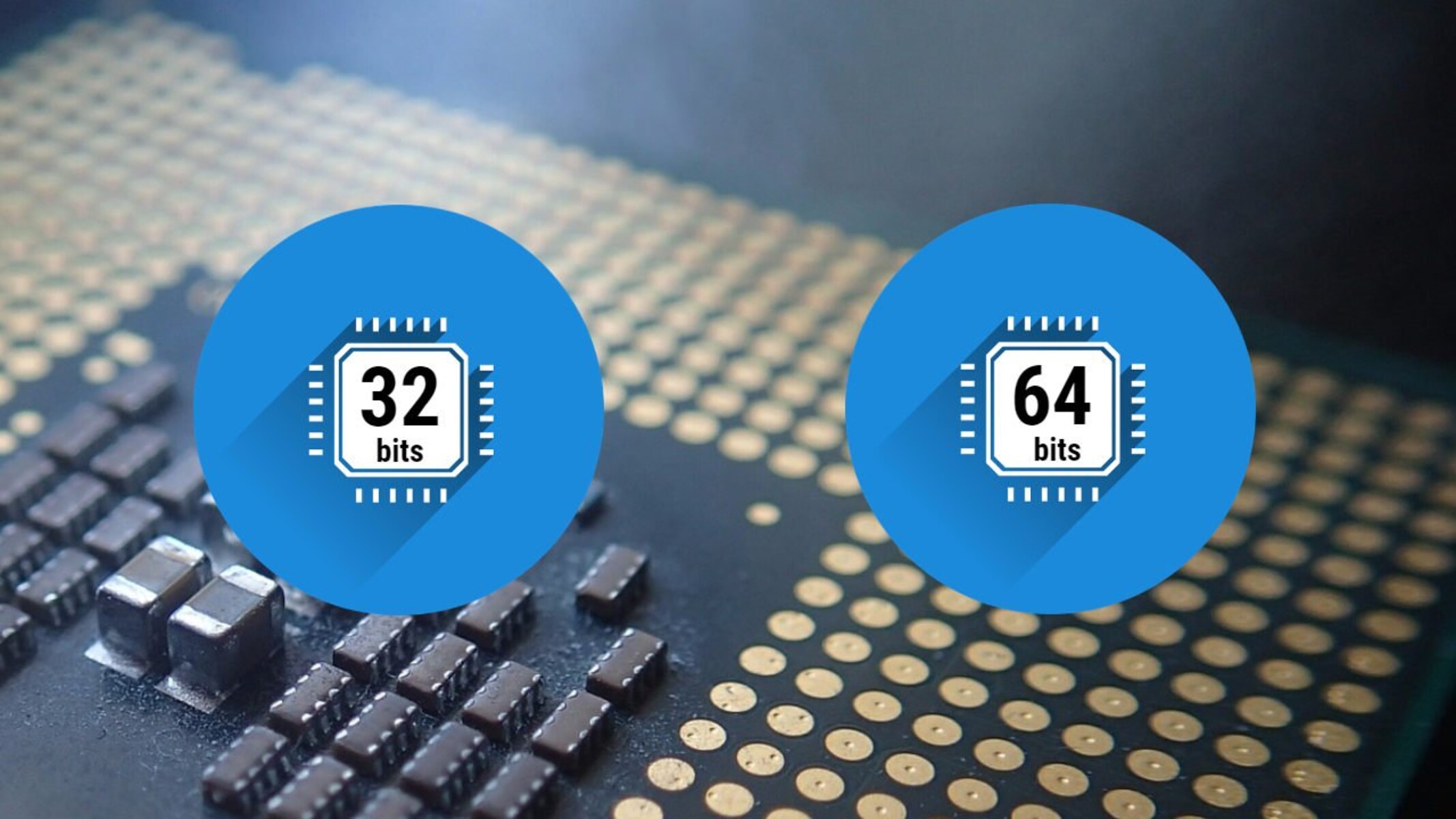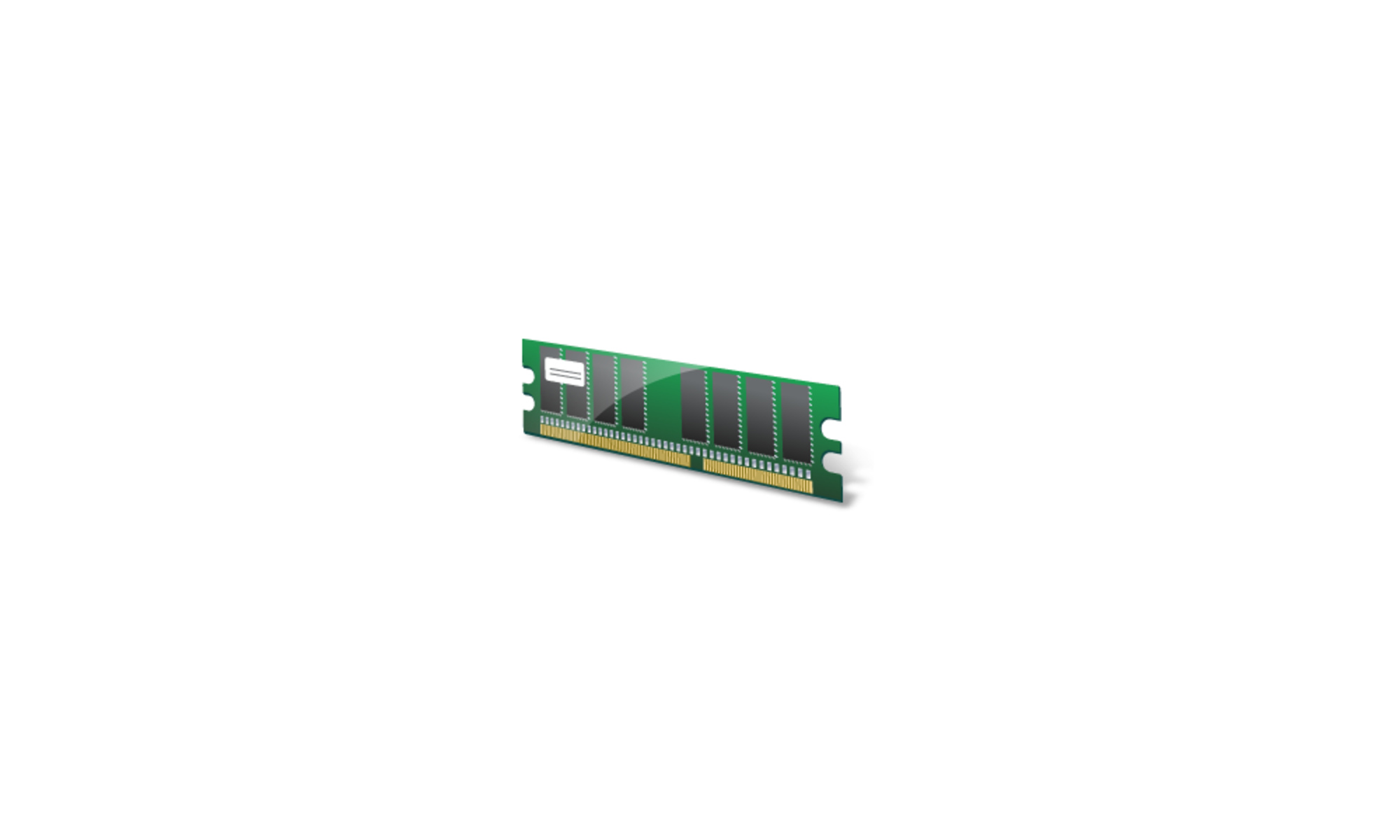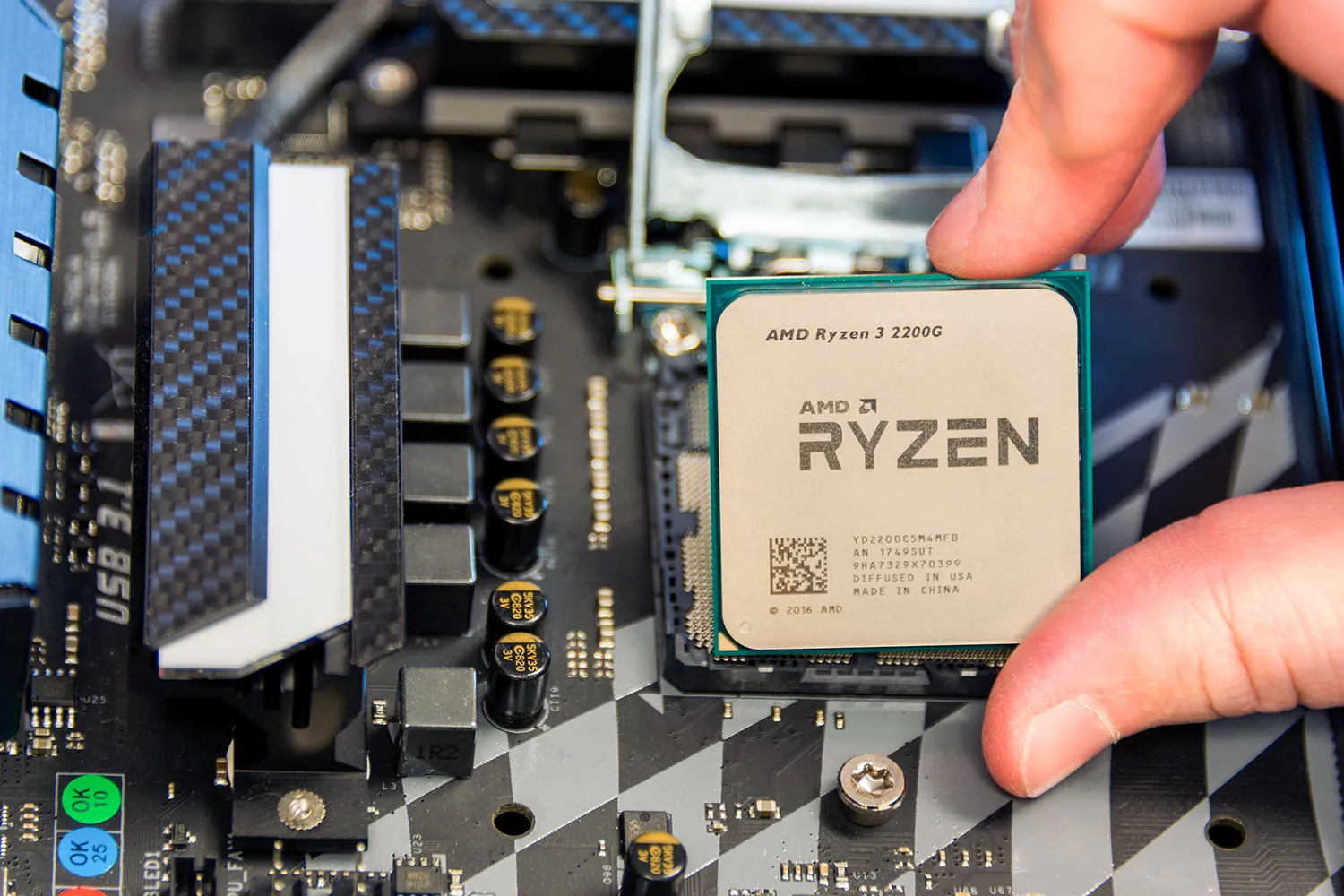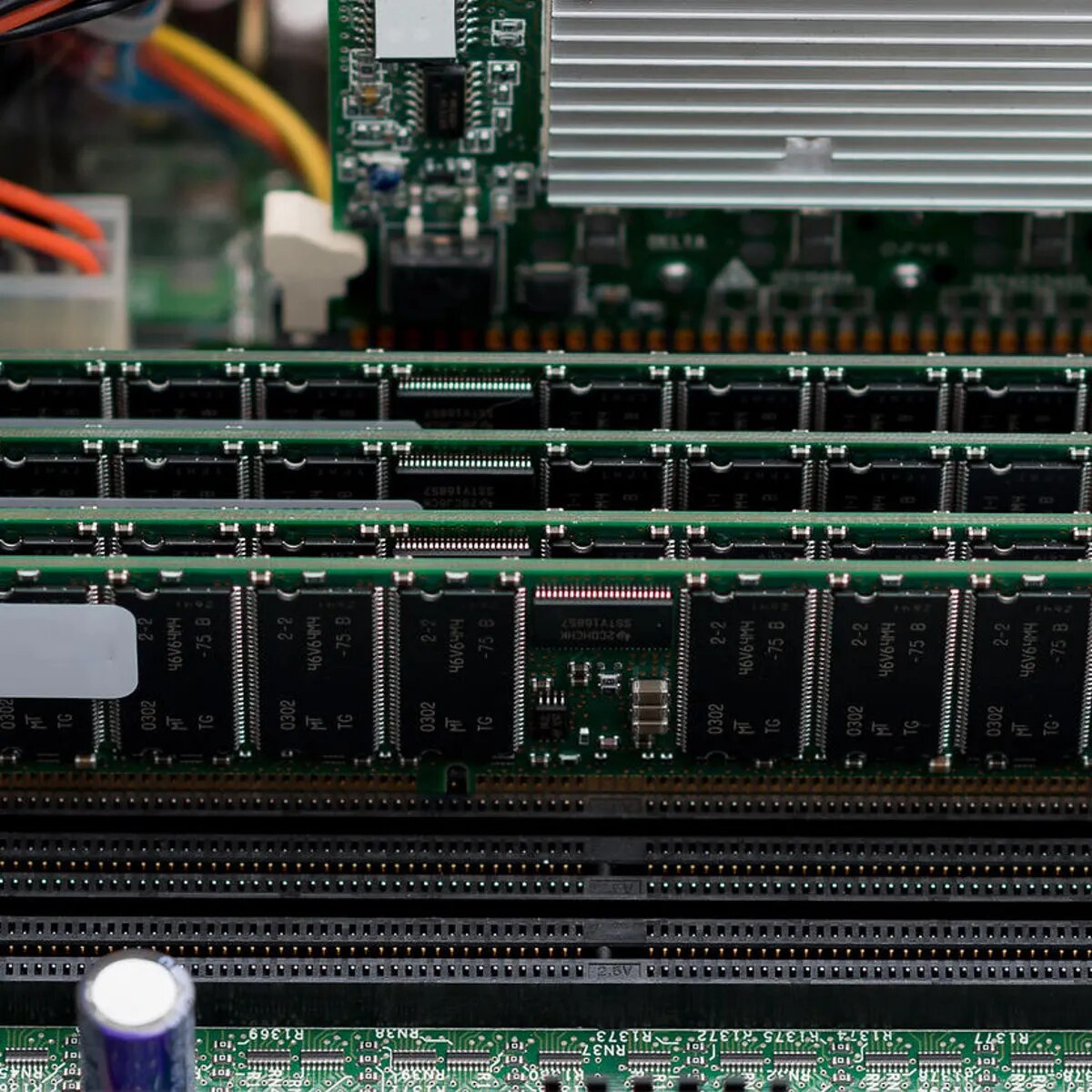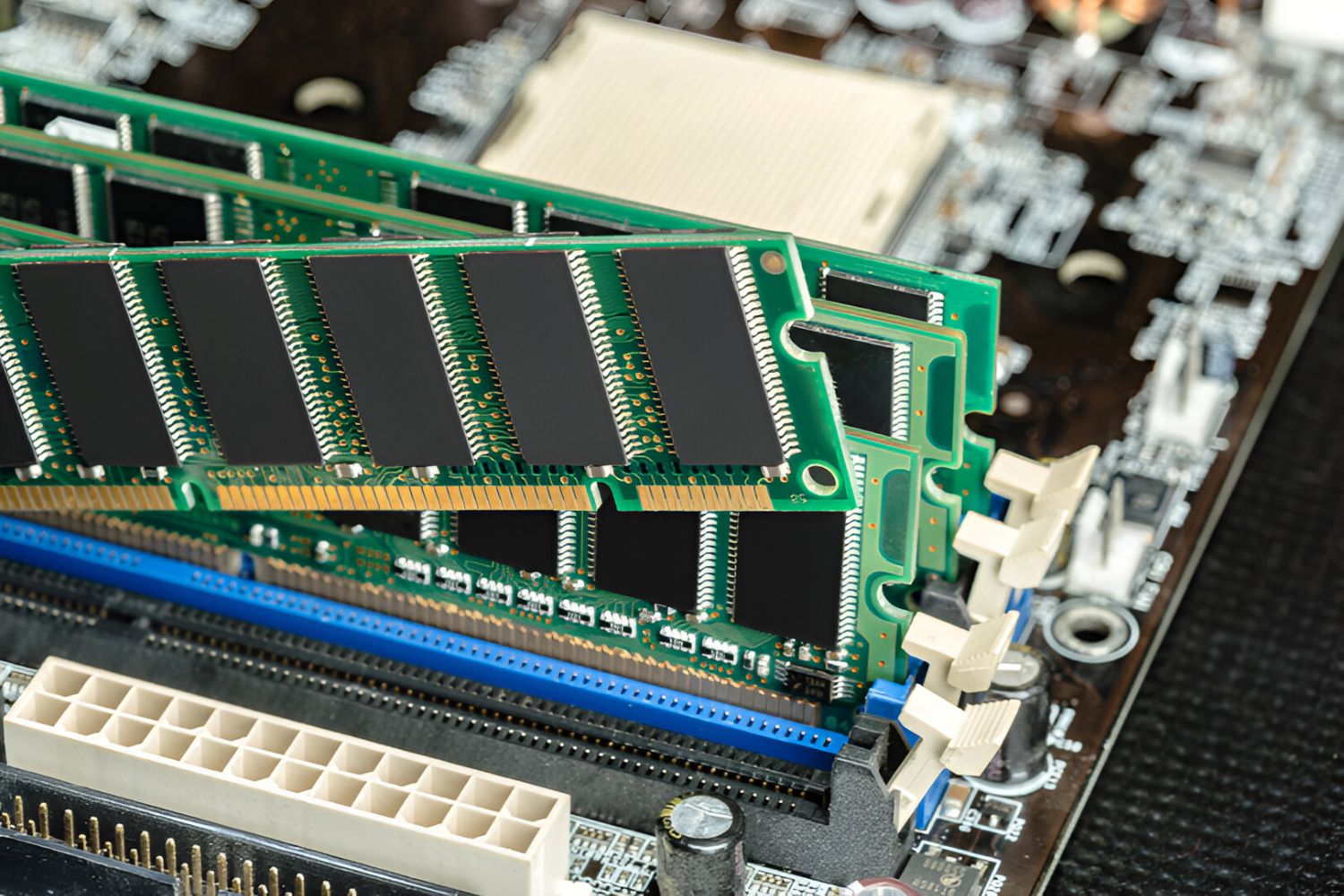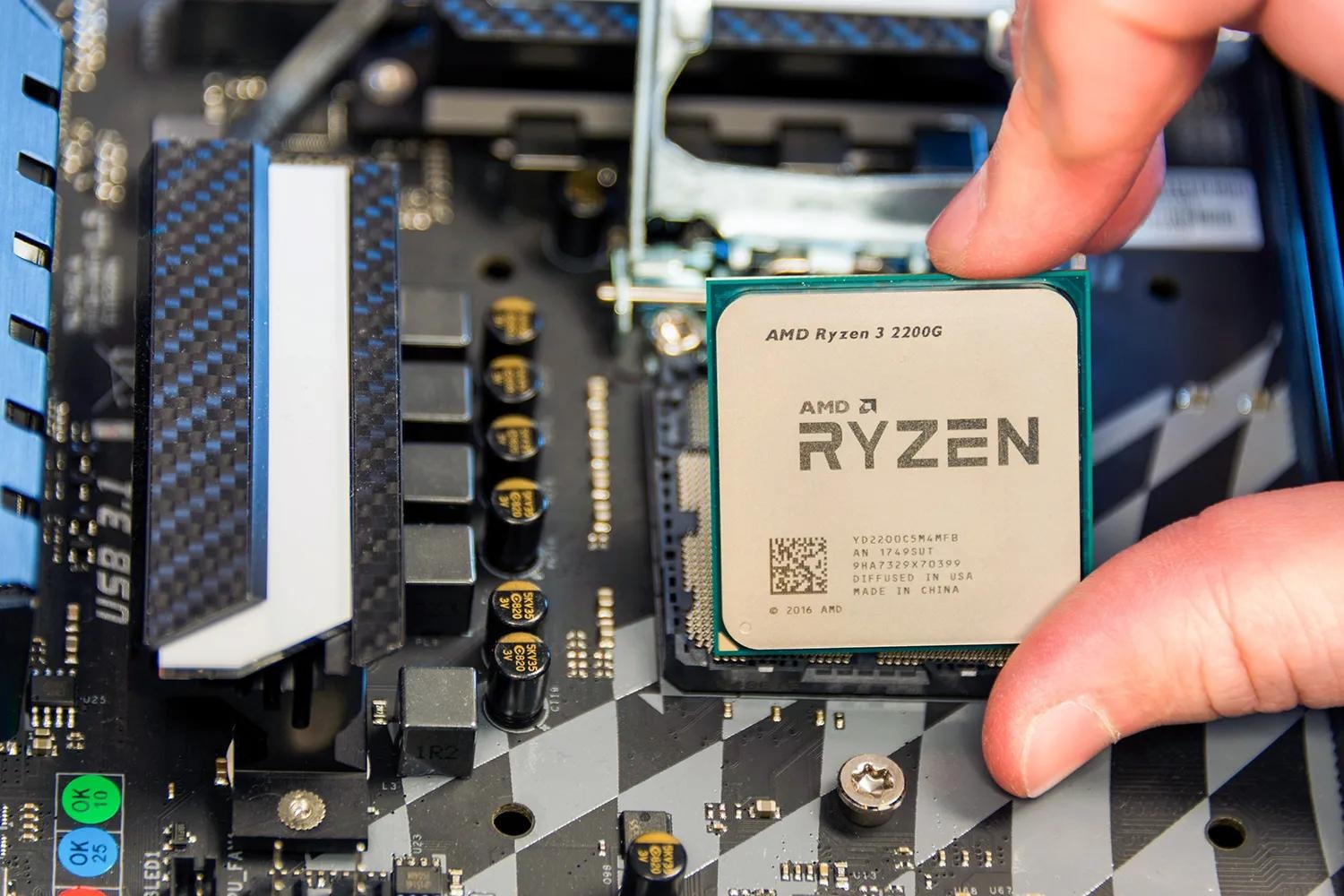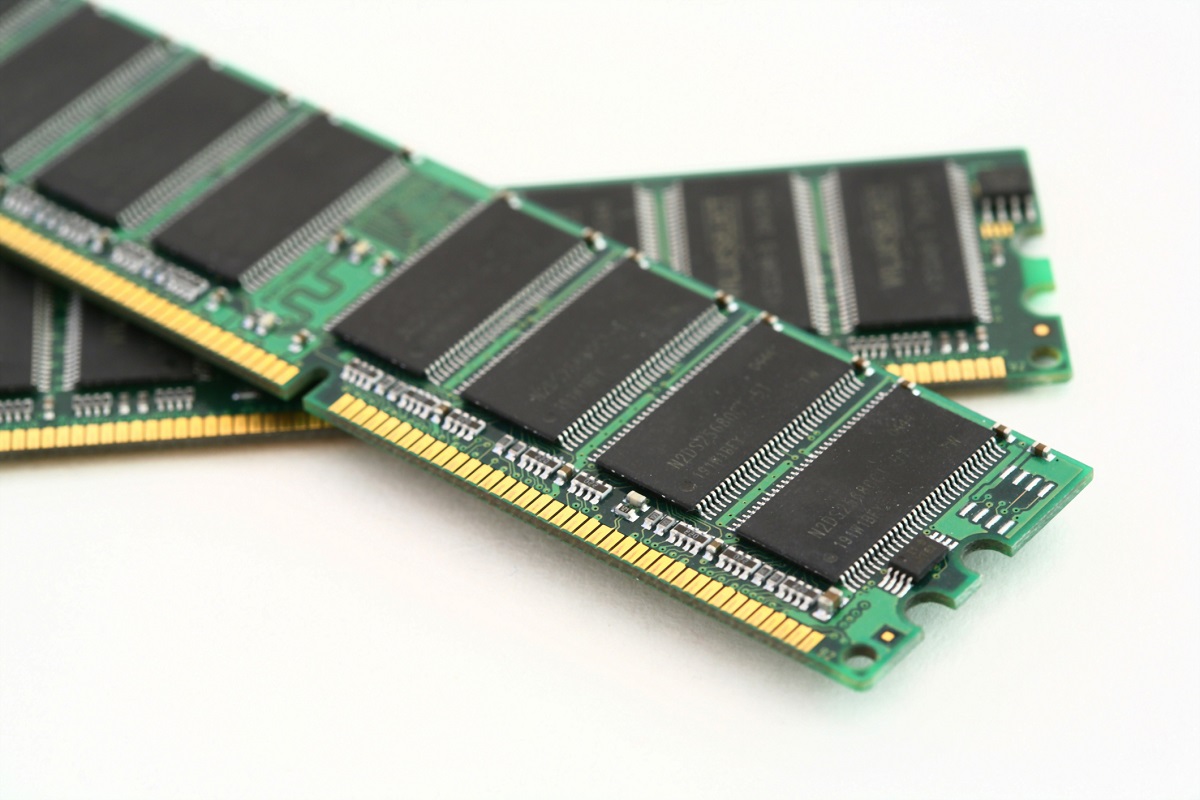Overview of RAM
Random Access Memory (RAM) is a crucial component of any computer system. It functions as a temporary storage space that allows the system to quickly access and manipulate data. RAM plays a vital role in the performance and efficiency of a computer, as it determines how many tasks can be performed simultaneously and how quickly they can be executed.
When you open an application or load a file, it is temporarily stored in RAM, allowing the system to access it rapidly when needed. The more RAM a computer has, the more data it can store and retrieve efficiently, resulting in faster and smoother overall performance.
RAM operates on a binary system, which means it stores and retrieves data in binary form. Each piece of information is represented by a combination of zeroes and ones. The capacity of RAM is typically measured in gigabytes (GB), with higher values indicating a larger storage capacity.
It is important to note that RAM is different from a computer’s hard drive or SSD (Solid-State Drive) which stores data permanently. RAM is volatile memory, meaning it does not retain data when the computer is powered off. Instead, it serves as a temporary workspace for ongoing operations.
As technology advances, the capacity and speed of RAM have increased significantly. Today, computers come with varying amounts of RAM, ranging from a few gigabytes to several terabytes in high-end servers.
Optimizing your RAM capacity is essential for ensuring optimal performance and smooth multitasking on your computer. Understanding the limitations and capabilities of your system’s RAM is crucial when it comes to making informed decisions on RAM upgrades and managing your computer’s resources effectively.
Understanding 32-bit and 64-bit Systems
When it comes to computer systems, you may have come across the terms “32-bit” and “64-bit.” These terms refer to the architecture of the operating system and the hardware it operates on.
A 32-bit system can handle data in 32-bit chunks, whereas a 64-bit system can handle data in 64-bit chunks. The difference may not seem significant, but it has implications for the system’s overall performance and the amount of RAM it can support.
In a 32-bit system, the memory addresses are limited to 32 bits, which translates into a maximum memory addressing capacity of 4 gigabytes. This means that regardless of how much physical RAM is installed, a 32-bit system can only utilize up to 4 GB of RAM. The remaining RAM goes unused or is inaccessible to the system.
On the other hand, a 64-bit system can support a much larger amount of RAM. With 64-bit memory addressing, the system can theoretically support up to 18.4 million terabytes of RAM. Although such massive amounts of RAM are not currently practical or feasible, 64-bit systems offer significantly higher RAM capacity than their 32-bit counterparts.
64-bit systems also provide other advantages beyond increased RAM capacity. They are capable of handling larger amounts of data and running more complex computations, making them ideal for demanding tasks such as video editing, 3D rendering, and gaming.
Furthermore, 64-bit architectures allow for better optimization of software, taking advantage of the larger memory addressing and processing capabilities. This results in improved performance and efficiency in running 64-bit applications.
It is important to note that in order to take full advantage of a 64-bit system’s capabilities, both the operating system and the applications running on it must also be 64-bit. Running a 32-bit application on a 64-bit system will limit the application’s access to RAM, as it will be constrained to the 4 GB limit of a 32-bit architecture.
Understanding the differences between 32-bit and 64-bit systems is crucial when it comes to choosing the right hardware and software for your needs. Knowing the limitations and advantages of each system can help you make informed decisions, especially when it comes to the RAM capacity your system can support.
Why 32-bit Systems Have RAM Limitations
One of the main reasons why 32-bit systems have RAM limitations is due to the memory addressing scheme they employ. In a 32-bit system, memory addresses are represented by 32 bits, allowing for a maximum of 2^32 unique addresses. This means that a 32-bit system can theoretically address a maximum of 4 gigabytes (4,294,967,296 bytes) of memory.
These limitations exist because the memory addressing scheme uses binary numbers, which consist of 0s and 1s. With 32 bits, there are 2^32 (or approximately 4.3 billion) possible combinations of 0s and 1s, hence the 4 GB limit.
However, not all of these 4 GB can be used for RAM. A portion of the address space is reserved for other hardware components, such as the graphics card, sound card, and other system resources. This means that even if you have 4 GB of physical RAM installed, the 32-bit system can only utilize a portion of it, typically around 3 to 3.5 GB.
Another factor contributing to the RAM limitations of 32-bit systems is the concept of virtual memory. Virtual memory is a memory management technique that allows the operating system to use a portion of the computer’s hard drive as if it were RAM. This allows applications to run even if there is not enough physical RAM available.
In a 32-bit system, the virtual memory addressing space is limited to the same 4 GB address range. This means that virtual memory cannot expand beyond the 4 GB limit, further restricting the total usable memory.
Overall, the combination of the 32-bit memory addressing scheme, reserved address space, and limitations of virtual memory result in the RAM limitations experienced by 32-bit systems. While this limitation may have been sufficient for older systems and less memory-intensive applications, it is now considered a bottleneck for modern computing needs.
To overcome these limitations and take advantage of higher amounts of RAM, upgrading to a 64-bit system is recommended. The 64-bit system allows for larger memory addressing, enabling the utilization of more RAM and better performance for memory-intensive tasks.
The Advantages of 64-bit Systems
Upgrading to a 64-bit system brings numerous advantages over its 32-bit counterpart. These advantages stem from the increased memory addressing capacity and improved processing capabilities of 64-bit systems.
One of the primary advantages of 64-bit systems is the ability to support a significantly larger amount of RAM. As mentioned earlier, 32-bit systems have a maximum RAM limit of around 4 GB, while 64-bit systems can theoretically support up to 18.4 million terabytes of RAM. This allows for smoother multitasking, faster data access, and improved performance in memory-intensive tasks, such as video editing, graphic design, and scientific simulations.
Moreover, 64-bit systems offer enhanced compatibility with modern software applications. Many software developers now create 64-bit versions of their applications to take advantage of the higher memory capacity and processing power. Running these applications on a 64-bit system results in improved performance, stability, and overall user experience compared to running them on a 32-bit system.
Alongside the increased RAM capacity, 64-bit systems also benefit from improved processing capabilities. The wider data bus in 64-bit systems allows for the efficient handling of larger chunks of data. This is particularly advantageous in tasks involving extensive calculations or large datasets, such as scientific modeling, video rendering, and data analysis. Consequently, these tasks can be completed faster and more efficiently on a 64-bit system.
Another advantage of 64-bit systems is their ability to allocate memory more effectively. In a 32-bit system, applications are limited to a maximum of 2 GB (or 3 GB in certain configurations) of memory, which can lead to memory shortages and performance degradation. In contrast, 64-bit systems can allocate memory in larger chunks, reducing the likelihood of memory shortages and allowing applications to run more smoothly and without the limitations imposed by a 32-bit architecture.
Lastly, 64-bit systems provide better security through features like Kernel Patch Protection and Driver Signing. These security measures protect the system from unauthorized modifications and ensure that only properly signed and validated drivers are installed, reducing the risk of security breaches and system vulnerabilities.
In summary, 64-bit systems offer significant advantages over 32-bit systems. Higher RAM capacity, improved processing power, enhanced software compatibility, efficient memory allocation, and better security contribute to a better computing experience and improved performance in memory-intensive tasks. As applications and software continue to evolve, upgrading to a 64-bit system becomes increasingly essential to fully leverage the benefits of modern technology.
Factors Influencing RAM Capacity in 64-bit Systems
While 64-bit systems offer the potential for vast amounts of RAM, the actual RAM capacity that can be supported depends on several factors. Understanding these factors is essential for determining the maximum amount of RAM your 64-bit system can utilize effectively.
The first factor is the physical limitation of the motherboard. Each motherboard has a designated number of memory slots, and each slot has a maximum RAM capacity that it supports. Ensure that your motherboard can accommodate the desired RAM modules and that it supports the maximum RAM capacity that you intend to install.
Next, the CPU (Central Processing Unit) plays a role in determining the RAM capacity. The CPU incorporates a memory controller, which is responsible for managing the transfer of data between the RAM and other system components. Different CPU models have varying memory addressing capabilities and memory speed support. It is crucial to consult your CPU’s specifications to verify the supported RAM capacity and speed.
Another consideration is the operating system installed on your 64-bit system. While 64-bit operating systems can theoretically support massive RAM capacities, the actual limitation might be imposed by the specific version of the operating system. For example, certain editions of Windows 10 have limits on the maximum RAM capacity they can effectively utilize (e.g., Windows 10 Home supports up to 128 GB, while Windows 10 Pro supports up to 2 TB). Verify the maximum supported RAM capacity of your operating system to ensure compatibility.
Furthermore, the type of RAM used also affects the maximum capacity. Different types of RAM, such as DDR3 and DDR4, have varying maximum capacities and speeds. Consult the manufacturer’s specifications to determine the maximum supported RAM capacity of your specific RAM type.
Lastly, the BIOS (Basic Input Output System) or UEFI (Unified Extensible Firmware Interface) also plays a role in determining the maximum RAM capacity. The BIOS or UEFI version on your motherboard may have limitations on the amount of RAM it can recognize and utilize. Updating the BIOS or UEFI firmware to the latest version might remove or increase any RAM capacity limitations.
It is important to note that while a 64-bit system can support a vast amount of RAM, it does not necessarily mean that more RAM equals better performance in all scenarios. The amount of RAM needed depends on the intended usage of the system. For typical office tasks and web browsing, a moderate amount of RAM (e.g., 8-16 GB) is often sufficient. On the other hand, memory-intensive tasks such as video editing or running virtual machines may benefit from larger RAM capacities.
Considering all these factors – motherboard limitations, CPU capabilities, operating system compatibility, RAM type, and firmware version – will help you determine the maximum RAM capacity your 64-bit system can effectively support. Be sure to consult the manufacturer’s specifications and documentation for accurate information and compatibility guidelines.
Maximum RAM Capacity for Different 64-bit Operating Systems
The maximum RAM capacity that a 64-bit operating system can support varies, depending on the specific version and edition of the operating system. While 64-bit architecture theoretically supports vast amounts of RAM, factors such as licensing limitations and hardware constraints can impose restrictions on the memory capacity that can be effectively utilized.
Here are the maximum RAM capacities for some popular 64-bit operating systems:
- Windows 10: The maximum RAM capacity supported by Windows 10 depends on the edition. The Home edition supports up to 128 gigabytes (GB) of RAM, while the Pro and Enterprise editions can handle up to 2 terabytes (TB) of RAM. The actual limit also depends on the specific build version of Windows 10, so it’s important to check the documentation for your specific version to determine the precise maximum RAM capacity.
- macOS: For macOS, the maximum RAM capacity depends on the version you are using. In recent versions, such as macOS Mojave and macOS Catalina, the RAM limit is usually dictated by the hardware rather than the operating system itself. Mac systems can typically support a range of RAM capacities, with higher-end models supporting up to 128 GB and beyond. It is essential to consult the technical specifications for your specific Mac model to determine the maximum supported RAM capacity.
- Linux: The maximum RAM capacity for Linux depends on the specific distribution and kernel being used. In general, 64-bit Linux distributions can support an extensive amount of RAM, often up to several terabytes. However, it is important to consider the limitations imposed by hardware constraints and the specific distribution being used.
- FreeBSD: FreeBSD, a popular open-source operating system, can support a wide range of RAM capacities on 64-bit systems. Different versions of FreeBSD have varying maximum RAM limits, with recent versions supporting significantly higher capacities, often reaching several terabytes.
It is crucial to note that these maximum RAM capacities are subject to various factors, including licensing restrictions, hardware capabilities, and the specific version and build of the operating system. Additionally, it is advisable to consider the limitations imposed by your motherboard, CPU, and firmware when determining the feasible RAM capacity for your system.
Furthermore, the practical use of large RAM capacities depends on the intended workload and applications. Most average users will find that 8 to 16 GB of RAM is more than sufficient for everyday computing tasks. However, professional users working with resource-intensive applications such as video editing, 3D rendering, or scientific simulations may benefit from higher RAM capacities.
Always consult the official documentation and technical specifications for your specific operating system and hardware to determine the maximum RAM capacity supported. Additionally, consider your specific needs and usage patterns when deciding on the amount of RAM to install in your 64-bit system.
How Much RAM Do You Really Need?
Determining the optimal amount of RAM for your computer depends on various factors, including your usage patterns, the applications you run, and your budget. While more RAM can generally result in better performance, there is a point of diminishing returns where additional RAM provides negligible benefits.
For everyday tasks such as web browsing, email, and document processing, 8 GB of RAM is typically sufficient for most users. This amount allows for smooth multitasking, quick application launches, and efficient performance in most general computing tasks.
If you frequently work with more demanding applications such as photo editing, video editing, or graphic design software, you might benefit from 16 GB or more of RAM. These applications often require significant memory resources to perform tasks smoothly, especially when working with large file sizes or complex projects.
Gaming enthusiasts should consider higher RAM capacities, especially if they play resource-intensive games or run games in conjunction with streaming or video capture software. Many modern games recommend 16 GB of RAM for optimal performance, although some may run adequately on 8 GB. Having more RAM can help minimize lag, improve load times, and provide a better overall gaming experience.
If you work with virtual machines or run resource-heavy software like CAD (Computer-Aided Design) or 3D modeling applications, you may benefit from 32 GB or more of RAM. These types of applications often require a substantial amount of memory to run smoothly and efficiently, as they involve complex calculations and large data sets.
For users engaged in specialized tasks such as scientific simulations, data analysis, or server management, the RAM requirements can be even more significant. In these cases, 64 GB or even higher capacities might be necessary to accommodate the memory-intensive nature of these workloads.
It’s essential to consider your budget when determining the amount of RAM you need. While increasing RAM capacity can enhance performance, it is important to assess whether the benefits justify the additional cost. In some cases, upgrading from 8 GB to 16 GB might provide noticeable improvements, whereas the difference between 32 GB and 64 GB might have a lesser impact on day-to-day tasks.
Ultimately, the optimal amount of RAM depends on your specific requirements and usage patterns. Assess the types of applications you use regularly, consider the intensity of your tasks, and take into account future scalability. Upgrading your RAM can provide a noticeable performance boost, but it’s important to strike a balance between meeting your needs and maximizing your budget.
Upgrading RAM in a 64-bit System
Upgrading your RAM in a 64-bit system is a cost-effective way to improve overall performance and responsiveness. Adding more RAM allows your system to handle more demanding tasks and run multiple applications simultaneously without experiencing slowdowns or memory bottlenecks.
Before upgrading your RAM, there are a few key considerations to keep in mind:
- Compatibility: Ensure that your system supports the desired type and speed of RAM. Check your motherboard’s specifications to identify the maximum RAM capacity, the type of RAM (e.g., DDR3, DDR4), and the maximum speed it can handle. Additionally, double-check the operating system compatibility, as some older operating systems may have limitations on the amount of RAM they can recognize.
- Identifying RAM Slots: Locate the RAM slots on your motherboard. Typically, there are multiple slots available for installation. Consult the motherboard manual or the manufacturer’s website to determine the specific locations of the slots.
- Match RAM Modules: If you are adding RAM to an existing system, make sure the new RAM modules match the specifications (type, speed, and capacity) of the existing modules. Mismatched RAM modules can lead to compatibility issues and reduced performance. Ideally, it is best to use identical modules to ensure optimal performance in dual-channel or quad-channel configurations.
- Installation Procedure: To install new RAM modules, power off your computer and disconnect the power cord. Open the computer case and locate the RAM slots. Gently insert the RAM modules aligned with the notches, ensuring they are fully seated and the retention clips click into place. Close the computer case, reconnect the power cord, and power on the system. The system should recognize the additional RAM during the boot process.
- Check for Recognition: After installation, verify that the RAM upgrade is recognized by your system. You can check the total installed RAM capacity under the system information settings in your operating system or by using third-party system monitoring utilities.
Keep in mind that the benefits of increasing RAM capacity are most apparent when your system is running RAM-intensive tasks. Everyday tasks and applications may not demonstrate a significant performance improvement with upgraded RAM unless you were previously experiencing memory-related issues.
Lastly, consider future upgrade possibilities when choosing your RAM capacity. If you anticipate increased memory demands in the future, it is wise to select a capacity that allows for further expansion without replacing all modules.
Overall, upgrading your RAM in a 64-bit system can provide noticeable performance improvements, especially when running resource-intensive tasks or multitasking. Following the proper installation procedures and ensuring compatibility will help ensure a successful upgrade and optimal system performance.
Conclusion
Understanding the complexities and considerations surrounding RAM in a 64-bit system is essential to make informed decisions when it comes to optimizing your computer’s performance. While 32-bit systems have inherent RAM limitations, upgrading to a 64-bit system unlocks the potential for larger RAM capacities and improved performance in memory-intensive tasks.
Factors such as motherboard limitations, CPU capabilities, operating system compatibility, RAM type, and firmware versions all play a role in determining the maximum RAM capacity your 64-bit system can effectively support. Considering these factors ensures that you can make the most of your system’s capabilities and meet your specific needs.
Determining the ideal amount of RAM for your computer depends on various factors, including your usage patterns, the applications you run, and your budget. For most users, 8 to 16 GB of RAM is sufficient for everyday tasks, while those working with more demanding applications might benefit from higher capacities of 16 GB or more.
When upgrading your RAM, ensure compatibility with your system’s specifications, match RAM modules, and follow the proper installation procedures. Verifying the recognition of the RAM upgrade by your system is crucial to ensure that the increased capacity is properly utilized.
Remember to consider the limitations imposed by your operating system, hardware, and budget. While increasing RAM capacity can enhance performance, assessing the benefits in relation to cost is important to strike a balance.
In summary, upgrading RAM in a 64-bit system is an effective way to improve performance and enable efficient multitasking. By understanding the technical aspects, considering your specific needs, and following proper installation procedures, you can optimize your system’s capabilities and ensure smooth and seamless computing experiences.







